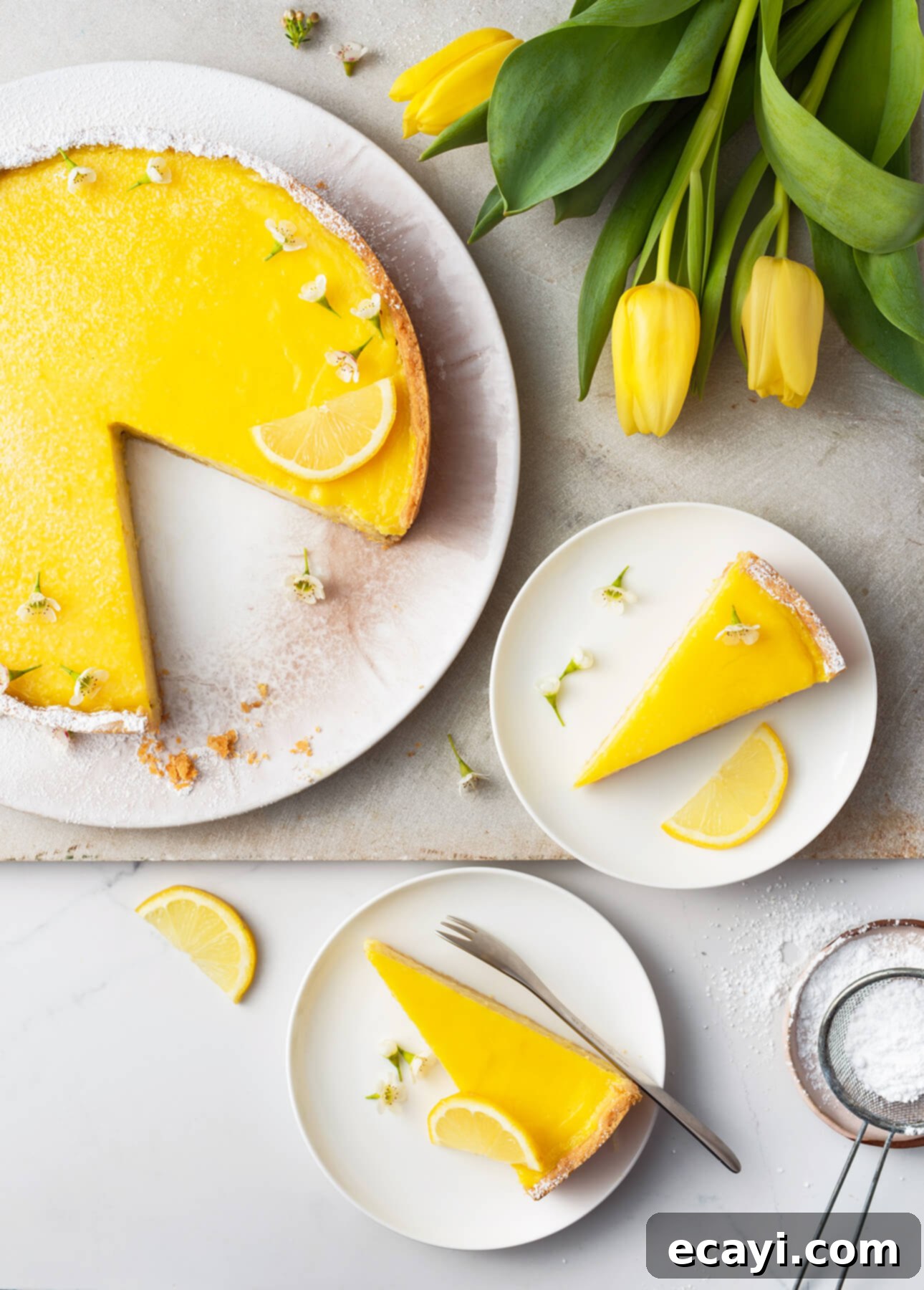Indulge in the Timeless Elegance: The Easiest French Lemon Tart (Tarte au Citron) Recipe
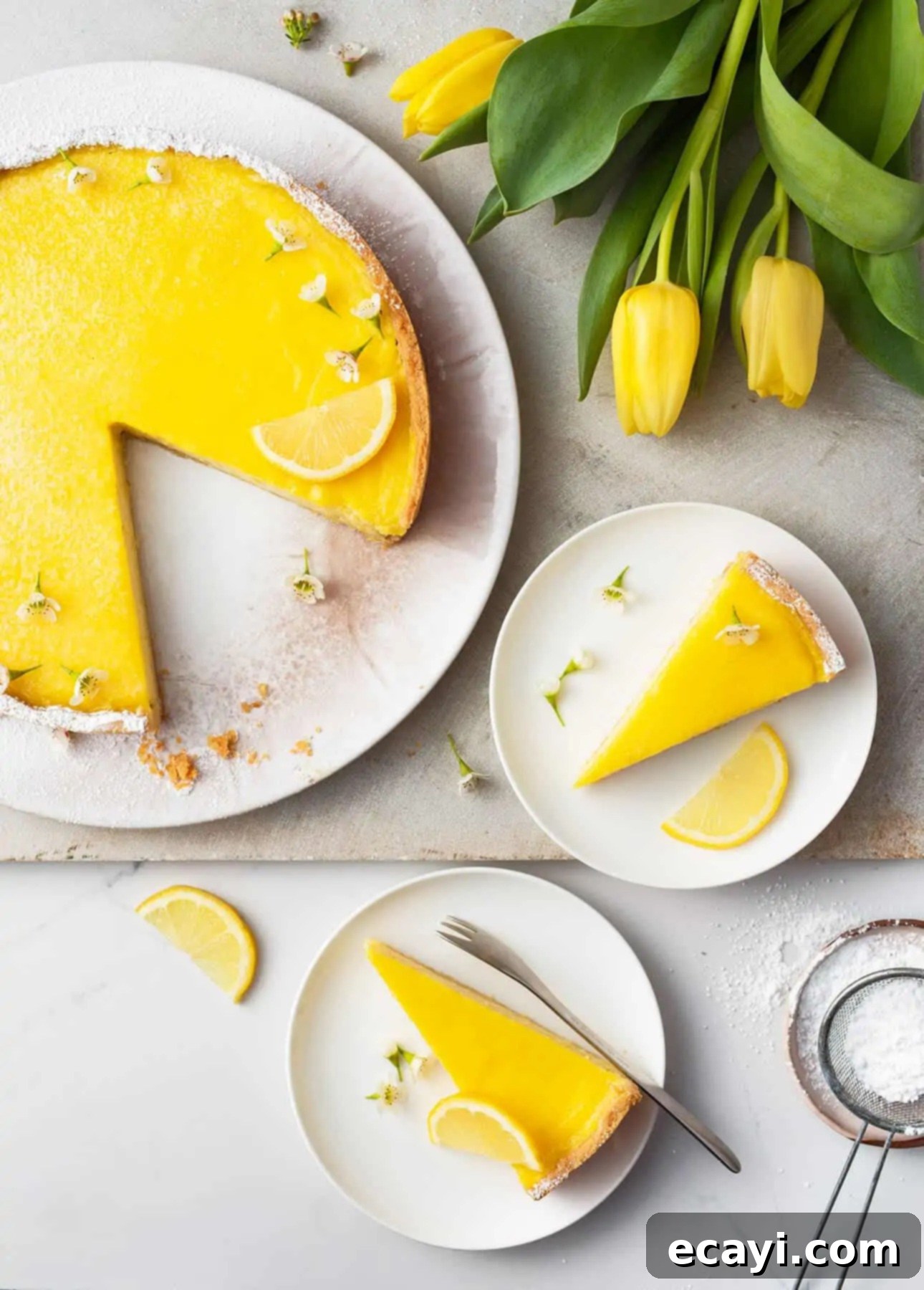
This post contains affiliate links. Full disclosure is at the bottom of the article.
A quintessential symbol of French patisserie, the Lemon Tart, or Tarte au Citron as it’s known in France, is a dessert that embodies both sophistication and simplicity. You’ll find variations of this beloved classic adorning the windows of every bakery and pastry shop across France, and it frequently graces the menus of French restaurants, from cozy neighborhood bistros to upscale dining establishments. Despite its ubiquitous presence and gourmet appeal, the French lemon tart is remarkably straightforward to create in your own kitchen.
This recipe is a testament to the fact that genuinely impressive dishes don’t have to be overly complex or time-consuming. My foolproof tarte au citron recipe will guide you through crafting a traditional French dessert using a minimal number of ingredients, all while teaching you the art of making a perfect shortcrust pastry from scratch. (However, for those pressed for time, a good quality store-bought crust is always an option!) Whether you’re taking your first steps into French baking or are a devoted fan of zesty lemon desserts, this elegant and simple recipe is poised to become a new staple in your baking repertoire.
French pastry justly enjoys a worldwide reputation for excellence. It captivates sweet lovers with its exquisite desserts, often characterized by intricate textures and elaborate flavor combinations. These aren’t just mere dishes; they are culinary experiences, meticulously crafted, sometimes requiring the skill of entire teams to perfect.
Fortunately, not every French dessert demands a professional touch or hours of dedicated labor. Many of the elegant treats you admire in French bakeries and pastry shops are surprisingly accessible for the home baker. For instance, financiers stand out as arguably the easiest French cakes to prepare from scratch. Their rich, buttery flavor and unique texture are distinctive, yet their preparation is as simple as baking a batch of muffins.
While I thoroughly enjoy the challenge of creating more intricate desserts, such as delicate French macarons, I possess a particular fondness for desserts that are deceptively easy to make. There’s an undeniable satisfaction, a feeling akin to possessing a culinary superpower, when I can produce a stunningly beautiful and incredibly delicious dessert with minimal ingredients and in a surprisingly short amount of time. It’s about achieving maximum impact with elegant efficiency.
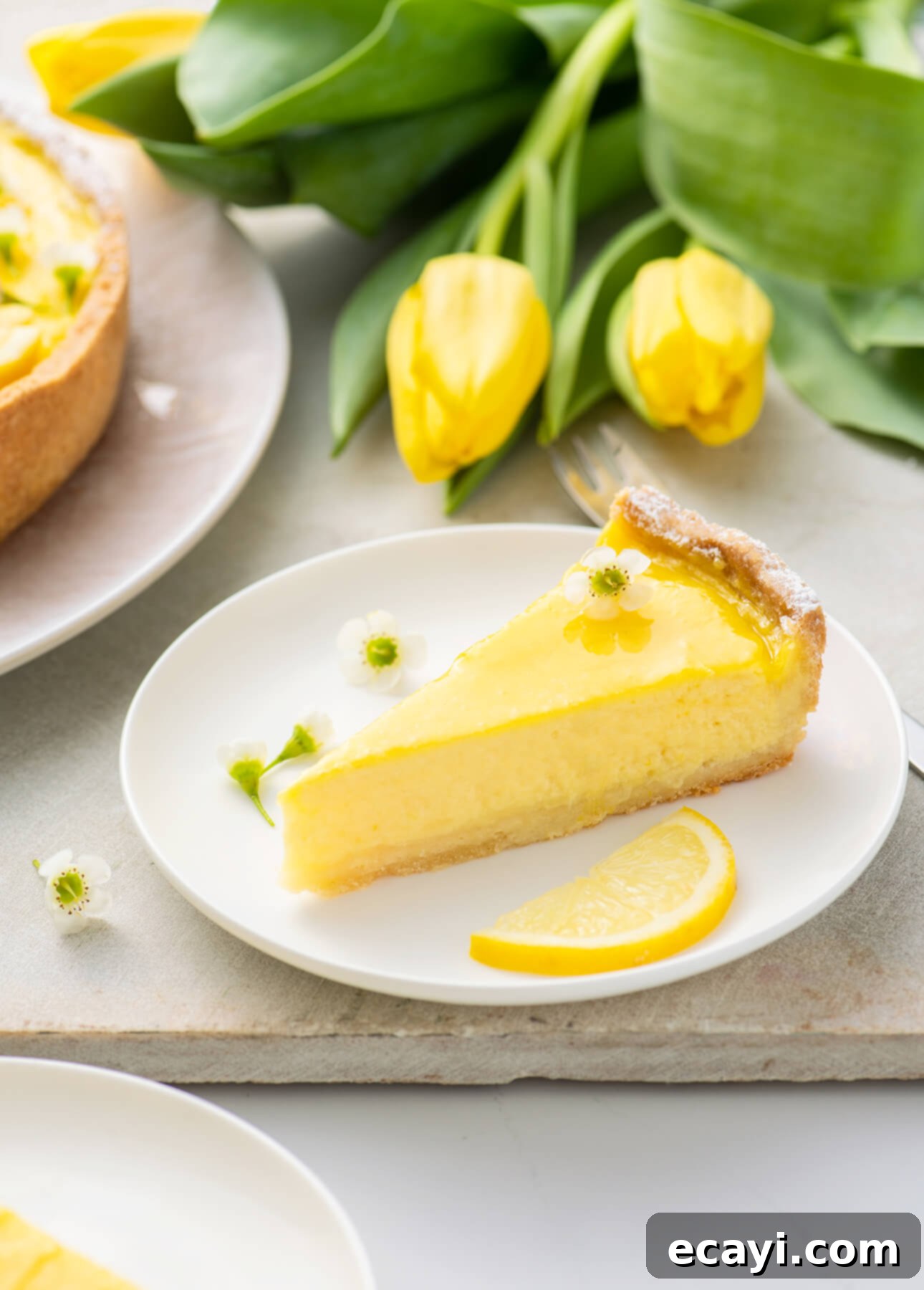
This classic French lemon tart perfectly exemplifies such a dessert: effortlessly easy, yet profoundly impressive. If you’re a connoisseur of lemon meringue pie, you might be pondering why one would opt for a lemon tart without that iconic, cloud-like meringue topping. As a significant admirer of lemon meringue pie—indeed, one of my all-time favorite desserts—I can confidently affirm that French lemon tart is an entirely distinct culinary creation. It doesn’t require that ethereal meringue layer to fully captivate and satisfy the palates of even the most ardent lemon dessert enthusiasts. Its charm lies in its pure, unadulterated lemon-infused custardy goodness.
The Distinctive Charm: French Lemon Tart vs. Lemon Meringue Pie
The primary distinction between a classic French lemon tart and a lemon meringue pie lies in the preparation method of their respective fillings. While both celebrate the bright, zesty flavor of lemon, they achieve their unique character through different culinary approaches.
Traditionally, lemon meringue pie filling is cooked on the stovetop until it thickens, much like a luscious lemon curd. This rich, cooked mixture is then poured into a pre-baked pie shell, often baked for an additional short period before being crowned with a fluffy meringue and browned.
In contrast, French lemon tart filling is strikingly quicker and simpler to assemble. There’s no stovetop cooking involved for the custard itself. You merely whisk together five essential ingredients—whole eggs, extra egg yolks, granulated sugar, rich heavy cream, and the vibrant duo of fresh lemon juice and lemon zest. This silken mixture is then poured directly into a blind-baked tart shell and baked until just set. This method contributes to the French lemon tart’s signature smooth, delicate texture.
Beyond preparation, the texture and flavor profile of French lemon tart are notably different from its meringue-topped cousin. While a French lemon tart delivers an assertively lemony punch, it presents a mellower, more refined citrus flavor. This is primarily due to the generous inclusion of heavy cream, which beautifully tempers the lemon’s sharpness. The cream works its magic, creating a rich, incredibly smooth, and custardy texture that is utterly irresistible on its own. For those who sometimes find the flavor of lemon meringue pie a tad too sharp or overly acidic, the nuanced balance of a French lemon tart often proves to be a delightful revelation.
Another, perhaps more obvious, difference is that, as its name implies, French lemon tart is not adorned with meringue. Yet, with the sublime smoothness and creamy depth of flavor this classic dessert offers, I assure you, the absence of meringue will hardly be noticed. Its inherent elegance stands proudly on its own.
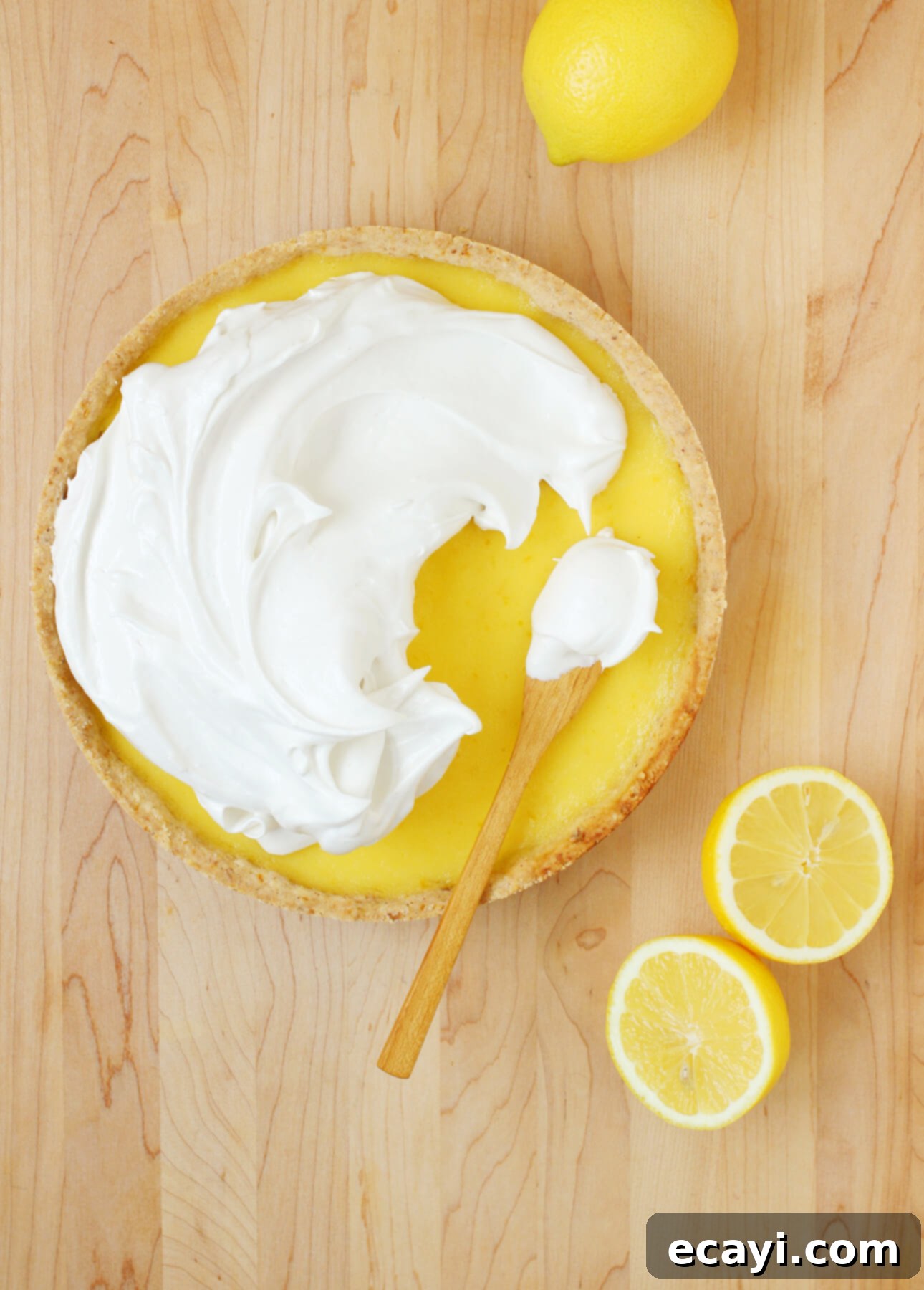
Essential Ingredients for Your Exquisite French Lemon Tart
To craft the wonderfully silky and rich filling of a French lemon tart, you’ll be delighted to discover that you require only four core ingredients: fresh eggs, granulated sugar, luxurious heavy cream, and, of course, vibrant lemons. Given that this recipe expertly utilizes both the fragrant zest and the bright juice of the lemons, I cannot emphasize enough the importance of choosing high-quality organic lemons whenever possible. Unwaxed organic lemons are the ideal choice, ensuring no unwanted residues interfere with your tart’s pure flavor. Bear in mind that not all organic lemons are unwaxed, so it’s always wise to check.
Regardless of whether your lemons are organic or conventional, thorough washing is absolutely paramount before grating their zest. If you’re using waxed organic fruit or standard lemons, make it a point to scrub them vigorously under cool running water. This crucial step helps to remove any wax coatings or potential chemical treatments, allowing the true essence of the lemon zest to shine through in your dessert.
Naturally, you’ll also need a few more fundamental ingredients to create the foundational crust for your tart: all-purpose flour, cold butter, and a single egg. I highly recommend learning how to make shortcrust pastry in mere seconds using a food processor. Once you master this incredibly efficient technique, you’ll likely find yourself saying goodbye to store-bought pie crusts forever! The difference in flavor and texture is truly transformative.
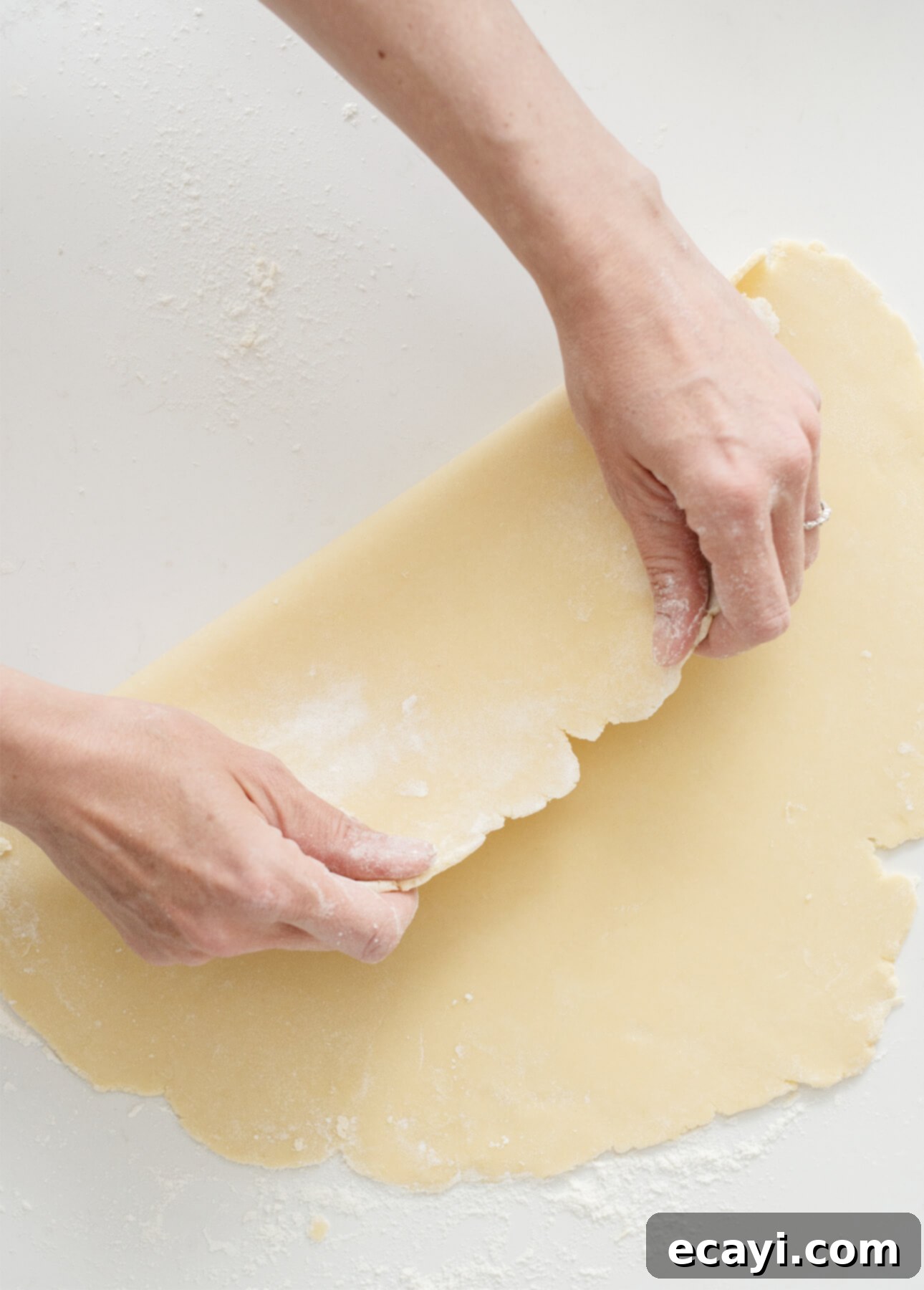
However, I understand that life can be busy! If you find yourself truly short on time, please feel no guilt in opting for a store-bought pie crust. Just be sure to choose a high-quality, all-butter variety for the best flavor outcome. More tips and detailed considerations regarding pie crust options are provided further down in the article.
Elevate the Flavor: The Magic of Meyer Lemons
While this French lemon tart recipe yields a truly delicious dessert when prepared with conventional lemons, if you have the opportunity to source Meyer lemons, I wholeheartedly encourage you to use them. Meyer lemons are a unique citrus variety, believed to be a cross between a lemon and a mandarin orange. They are sweeter, less acidic, and possess a wonderfully floral aroma, often with hints of herbs. These delightful characteristics make them an exceptional pairing for the rich heavy cream in this recipe, imparting a sophisticated and nuanced flavor profile to the tart. Meyer lemons are truly the perfect choice for transforming this already luxurious dessert into something even more extraordinary.
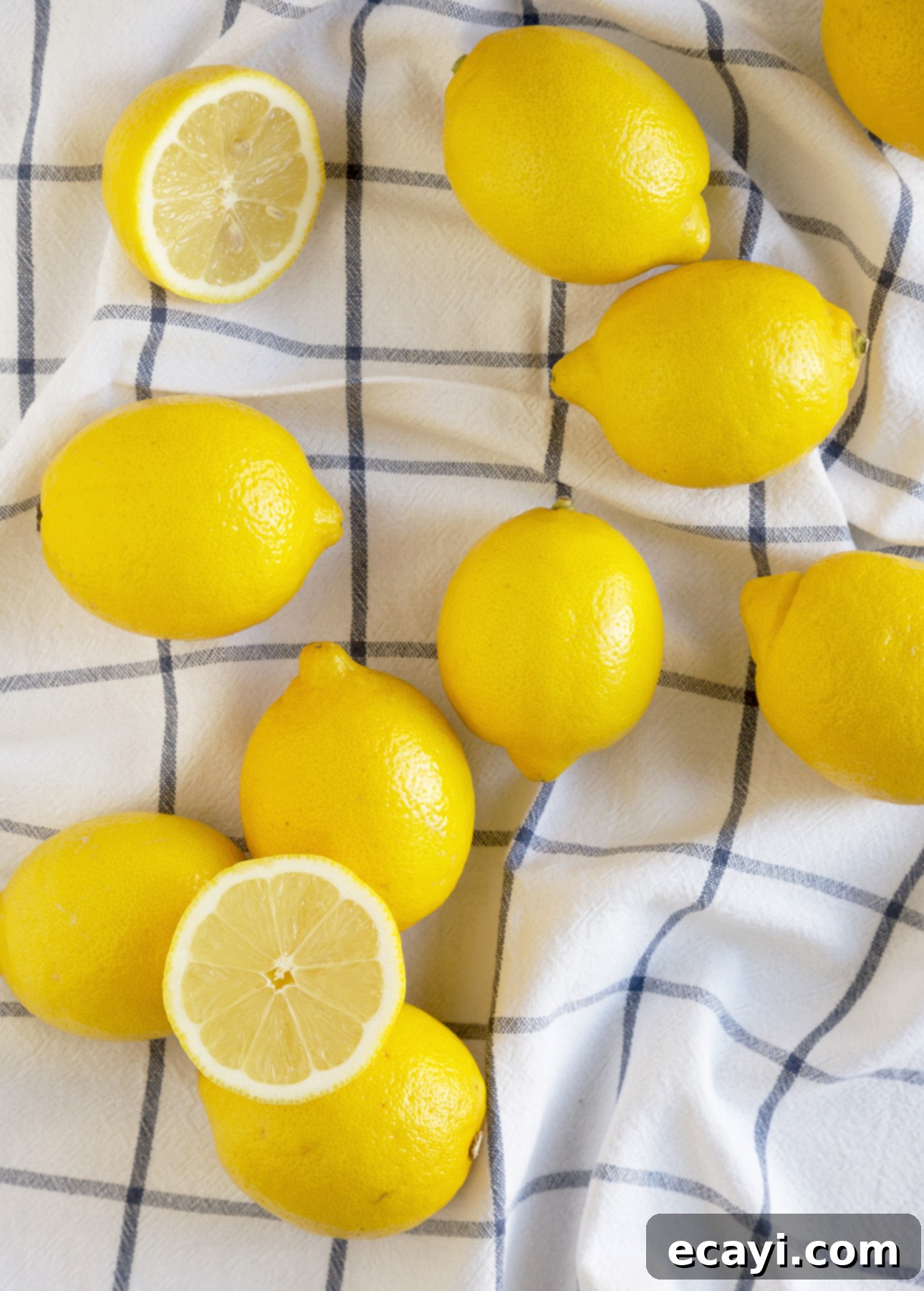
Effortless Perfection: How to Make Shortcrust Pastry without Breaking a Sweat
If the idea of making shortcrust pastry from scratch has always seemed daunting or out of reach, it’s time to reconsider! Thanks to my revolutionary Foolproof Shortcrust Pastry recipe, you can achieve professional-quality pastry in astonishingly little time—we’re talking mere seconds. If you’ve consistently shied away from the perceived complexities of homemade pie pastry, now is the perfect moment to experience the simplicity and reliability of my method. It’s consistently one of the most popular recipes on my website, and for very good reason: it’s incredibly speedy, supremely easy, unfailingly reliable, and remarkably versatile for both sweet and savory pie applications.
My renowned Foolproof Shortcrust Pastry recipe has successfully converted countless pie lovers, proving to them that there’s no need to rely on store-bought pastry for a truly exceptional pie. Now, it’s your turn to join their ranks: empower yourself by making this foundational shortcrust pastry from scratch and transform it into this magnificent French lemon tart. You’ll not only savor the exquisite flavors but also feel an immense sense of pride in your delicious culinary accomplishment!
VIDEO: Master Shortcrust Pastry IN SECONDS with Your Food Processor
Convenience Meets Quality: Using Store-Bought Pie Pastry for French Lemon Tart
While crafting your own shortcrust pastry is a rewarding experience that elevates the final flavor, I completely understand that time isn’t always on your side. If you find yourself in a rush, you can absolutely use a good quality store-bought pie pastry to make my French lemon tart recipe. For the most authentic and delicious result, I strongly recommend seeking out an all-butter variety. Butter provides that essential rich flavor and flaky texture that margarine or vegetable shortening simply cannot replicate. Once you have your preferred store-bought crust, simply roll it out according to package directions, then proceed to blind-bake it using the instructions detailed below to ensure a perfectly crisp base for your tart.
The Essential Technique: How to Blind Bake a Tart Shell for a Perfect Crisp
This French Lemon Tart recipe mandates that you blind bake the tart shell. “Blind baking” refers to the process of pre-baking a tart or pie shell before any filling is added. This step is absolutely critical, especially when working with wet fillings, such as those found in a savory quiche or, of course, a delicate lemon tart. Blind baking ensures that your crust achieves a beautifully cooked-through and crisp texture, a feat that would be challenging to accomplish if baked directly under a moist filling, which often leads to a soggy bottom.
To successfully blind bake a tart shell, you will need pie weights. These are small ceramic beads specifically designed to fill the tart shell and prevent the pastry from puffing up or shrinking excessively during baking. If you don’t own or prefer not to purchase ceramic pie weights, a practical and equally effective alternative is to use dry peas or beans. I’ve personally used the same jar of dry peas for years; after each use, simply allow them to cool completely before storing them in a glass jar or a heavy-duty resealable plastic bag in your pantry. They will last indefinitely—just remember that once used as pie weights, they are no longer suitable for cooking and consumption.
Here’s a step-by-step guide to blind baking your tart shell: After preparing your shortcrust pastry (either homemade or store-bought), roll it out evenly and carefully fit it into a 9-inch (23 cm) tart pan with a removable bottom. This removable base is incredibly helpful for easy unmolding. Once the pastry is in place, refrigerate the tart shell for at least 1 hour, or freeze it for 30 minutes. This chilling period is crucial for preventing shrinkage.
Before baking, use a fork to prick the bottom of the tart shell several times. This creates vents to allow steam to escape. Cut out a large piece of parchment paper, crumple it gently, then ease it into the pastry, lining the entire shell. Fill the parchment-lined pan to the brim with your chosen pie weights or dry peas. Bake the weighted crust for 20 minutes. After this initial bake, carefully remove the pan from the oven, grasp the parchment paper by its edges, and lift it, along with the weights, out of the crust and set aside. Return the now unweighted crust to the oven and bake for an additional 10 minutes, or until it achieves a beautiful golden-brown color. Finally, transfer the crust to a wire rack to cool for 15 minutes before preparing your French lemon tart filling as directed in the recipe.
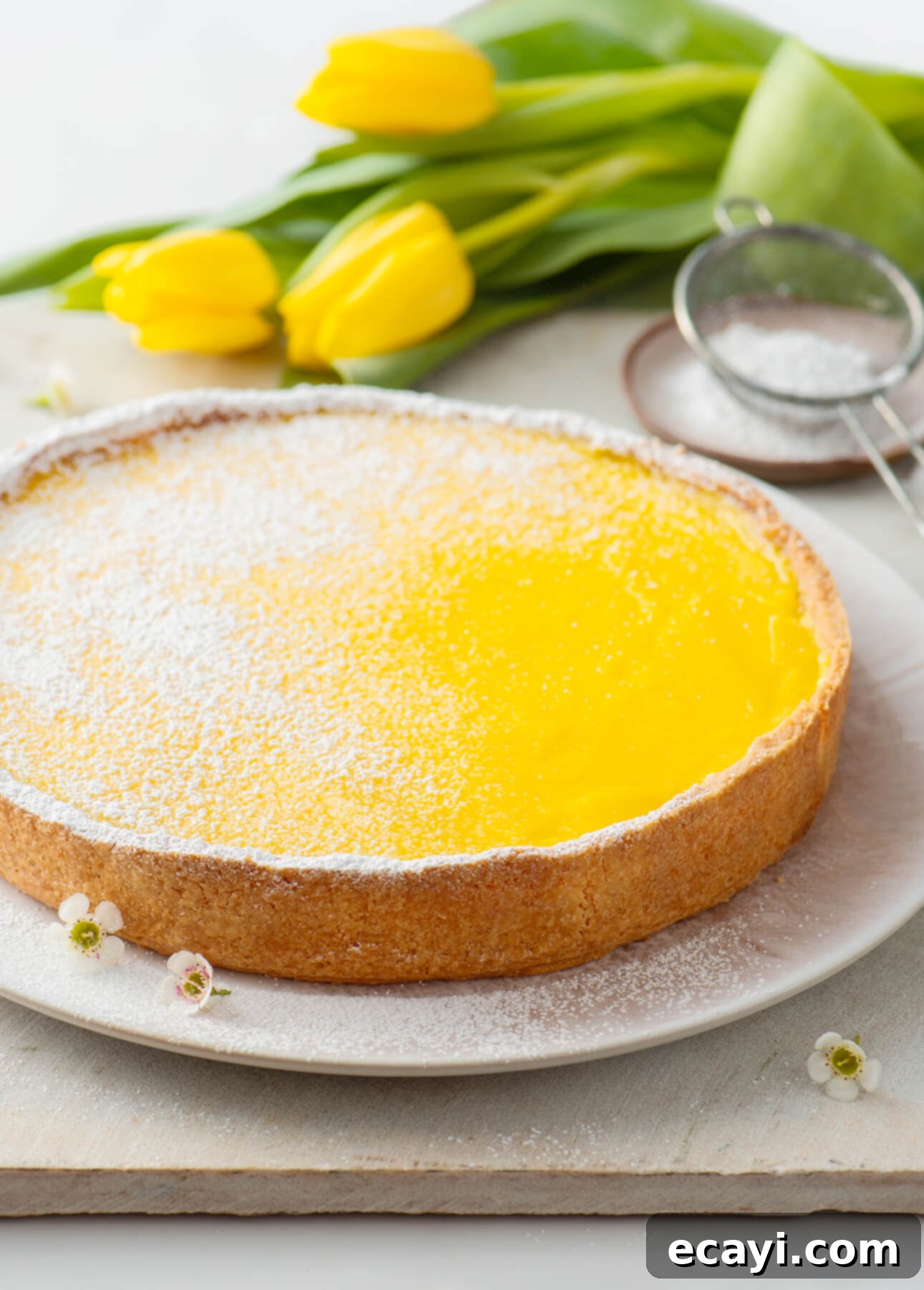
Choosing the Perfect Pan for Your French Lemon Tart
For your French lemon tart, you can confidently use any standard 9-inch (23 cm) tart pan equipped with a removable bottom. Traditional tart pans often feature fluted edges, which create a classic, decorative finish. However, for a more contemporary, sleek, and professional pastry aesthetic—such as the one beautifully showcased in this post’s photographs—you might consider using a 9-inch (23 cm) cake pan with a removable bottom instead. The straight, smooth sides of a cake pan offer a wonderfully modern presentation.
It’s important to remember that this French lemon tart is not a “deep-dish” dessert. Therefore, it is crucial to accurately cut the pastry to the correct height before you proceed with blind-baking. If using a cake pan, carefully fit the shortcrust pastry into it, ensuring that the pastry extends vertically up the inner ring of the pan. Then, use a sharp, precise knife to trim off any excess pastry. The ideal depth for your pie shell should be approximately 1.5 inches (4 cm) prior to blind-baking. Once trimmed, freeze or refrigerate the tart shell as instructed in the blind-baking section to properly chill the dough.
To guarantee that the sides of your pastry shell remain perfectly straight and do not slump during baking, take a large square of parchment paper, gently crumple it, then ease it snugly into the shell. Subsequently, fill the shell right up to the very top with your pie weights or dry peas. This comprehensive filling will exert enough pressure to prevent the pastry from collapsing down the sides of the pan as it bakes, resulting in beautifully structured edges. If you opt for a straight-sided cake pan for this French lemon tart, it is absolutely essential that you do not skip the freezing or thorough refrigeration of the tart shell before blind-baking. This additional chilling step allows the butter in the pastry to firm up, ensuring a wonderfully crisp crust that holds its shape without melting or shrinking prematurely in the oven.
Serving Your French Lemon Tart: Elegant Presentations and Delightful Pairings
The French lemon tart is inherently beautiful and elegant, making it perfectly capable of being served as a standalone dessert. For a refined finishing touch, a delicate dusting of powdered sugar just before serving adds a whisper of sweetness and a visually appealing flourish, enhancing its sophisticated charm.
During the warmer months, consider garnishing your lemon tart with an assortment of fresh berries. A vibrant layer of plump raspberries, juicy blueberries, or thinly sliced strawberries can transform the tart into a breathtaking seasonal masterpiece, adding both color and a complementary burst of fresh flavor that pairs exquisitely with the tart lemon custard.
For an additional layer of indulgence, you can also serve your French lemon tart alongside a generous cloud of Chantilly cream—a classic, lightly sweetened whipped cream. The cool, airy richness of Chantilly cream provides a delightful counterpoint to the tartness of the lemon filling, creating a harmonious balance of flavors and textures. You’ll find detailed instructions on how to prepare Chantilly cream conveniently included in the recipe note below.
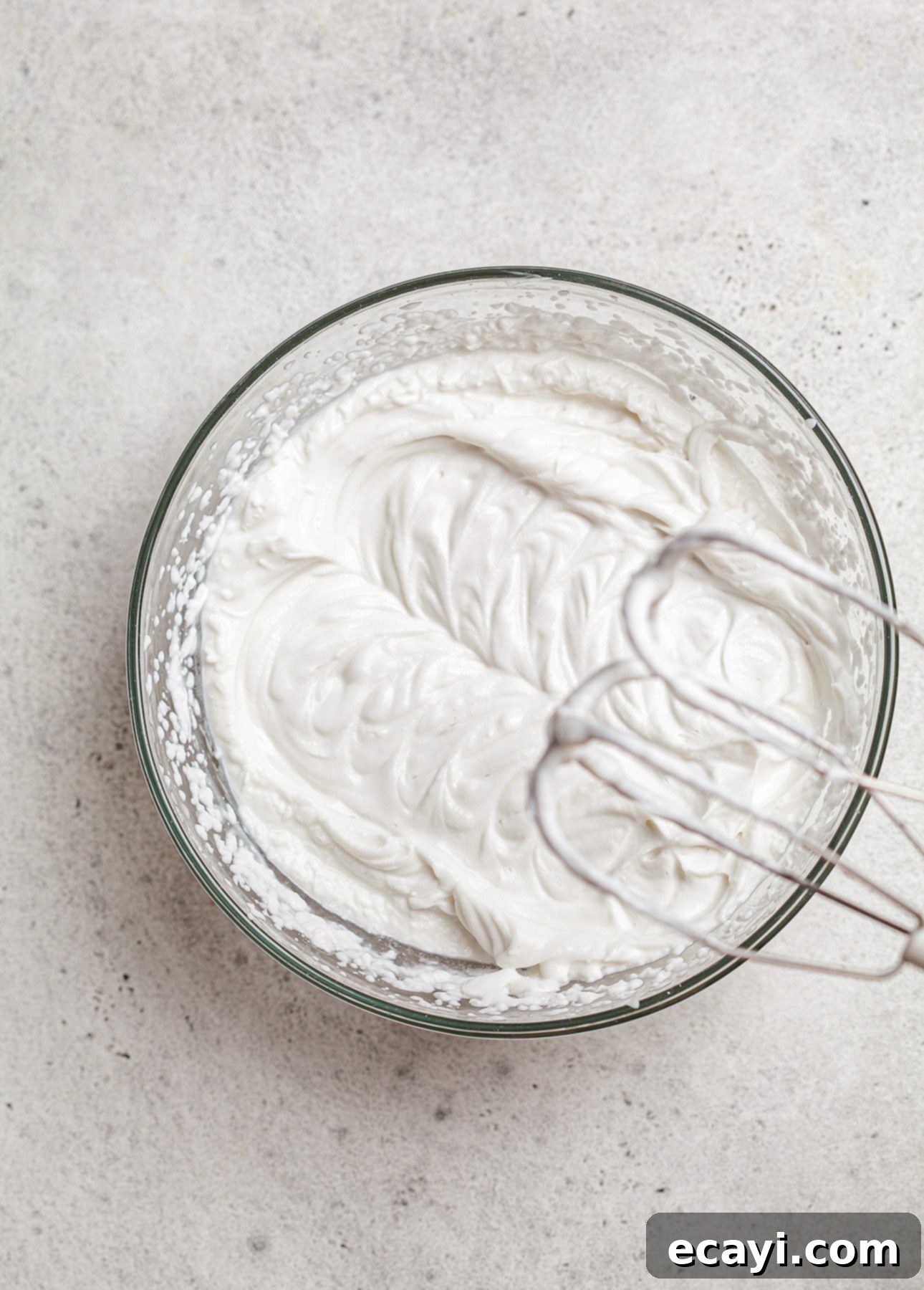
More Irresistible Dessert Recipes for Devoted Lemon Lovers
If you’ve fallen in love with this French lemon tart recipe, chances are you share my passion for all things lemon! There’s something undeniably uplifting and joyful about lemon desserts, isn’t there? They’re truly like a burst of sunshine on a plate. Allow yourself to be inspired to create even more bright, zesty, and utterly delightful desserts with my extensive collection of 35 irresistible lemon dessert recipes. This curated selection offers a wide array of treats, perfect for any occasion or craving.
To give you a glimpse of the deliciousness awaiting you, here are just a few of the tantalizing lemon desserts you’ll discover within my comprehensive recipe collection:
- Lemon Meringue Pie (for when you do crave that classic!)
- Glazed Mini Lemon Poppyseed Tea Cakes
- Layered Elderflower Cake
- Lemon Shortbread Cookies
- Limoncello Tiramisu
Click Here to Unlock All 35 Lemon Dessert Recipes!
Explore Further: The Citrus Desserts Cookbook
Do you have a particular fondness for zesty, citrus-centric dessert recipes? Then you are sure to adore my Citrus Desserts Cookbook! This vibrant eBook is brimming with colorful, utterly irresistible, and meticulously tested dessert recipes. It features an array of delights including elegant cakes, classic tarts, wholesome breakfast treats, satisfying bars, delightful spoonable desserts, and even homemade candies. Beyond the mouthwatering recipes, Citrus Desserts boasts stunning photography, countless clever tips to ensure your baking success, and a wealth of variation ideas designed to make each recipe as versatile and adaptable as possible. It’s an invaluable resource for anyone who cherishes the bright, invigorating flavors of citrus in their sweet creations. LEARN MORE AND GET YOUR COPY!
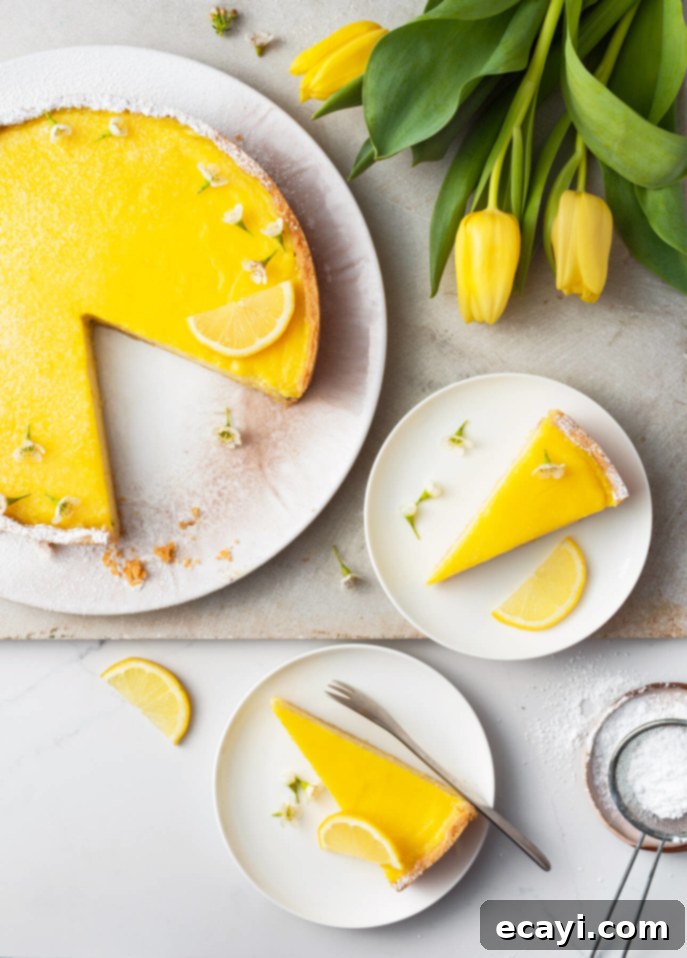
Pin Recipe
French Lemon Tart Recipe
Ingredients
For the tart shell
- 1 batch Foolproof Shortcrust Pastry
For the lemon cream filling
- 4 large eggs
- 2 large egg yolks
- ¾ cup granulated sugar
- 1 ½ cups heavy cream (35 % m.f.)
- ½ cup strained, freshly squeezed lemon juice
- 2 tbsp finely grated lemon zest
To serve (optional)
- Powdered sugar, OR
- Chantilly Cream (see note)
Instructions
For the tart shell
-
Prepare the shortcrust pastry, then roll it out and fit it into 9-in (23 cm) tart pan with a removable bottom. Freeze for 30 minutes, or refrigerate for 1 hour.
-
Preheat the oven to 350°F (175°C). Take the crust out of the refrigerator or freezer.
-
Using a fork, prick the bottom of the tart shell several times. Cut out a large piece of parchment paper and ease it into the pastry to line it. Fill the pan with pie weights or dry peas. Bake the crust for 20 minutes. Remove from the oven, pull up the parchment paper with the weights and set aside, then return the crust to the oven and bake for 10 minutes, or until it’s golden brown. Transfer to a wire rack to cool for 15 minutes.
For the lemon cream filling
-
Lower the oven temperature to 325°F (160°C). In a large mixing bowl, whisk together the eggs and egg yolks, then add the sugar and whisk to incorporate. Whisk in the cream, then the lemon juice and lemon zest.
-
Set the tart pan with the blind baked crust over a baking sheet. Pour the lemon cream filling into the crust. Carefully transfer the tart to the oven and bake for about 45 minutes, or until the filling is set, but still quite wobbly in the center. The French lemon tart will finish setting as it cools. Don’t overbake: overbaking the tart could make the filling crack upon cooling—the tart will still be delicious, but maybe just a tiny bit less pretty.
-
Transfer the tart to a wire rack and let cool completely.
SERVING
-
To serve, sprinkle with powdered sugar, slice, and serve. Alternatively, serve with Chantilly cream.
STORAGE
-
Store the tart uncovered in the refrigerator for up to 3 days. (Storing the tart uncovered will help keep the crust crisp.)
Notes
In a large mixing bowl, pour 1 cup (250 ml) heavy cream (35% m.f.), then add 1/4 cup (30 g) sifted powdered sugar and 1/2 tsp (2 ml) pure vanilla extract. Beat until soft peaks form, about 3 to 5 minutes. Cover the bowl with plastic wrap and refrigerate until needed.
Did you make this?
Tell me how you liked it! Leave a comment or take a picture and tag it with @foodnouveau on Instagram.
Disclosure Notice: This site participates in the Amazon Associates Program, an affiliate advertising program designed to provide a means for the site to earn fees by linking to Amazon and affiliated sites.
If you click on an affiliate link, I may earn advertising or referral fees if you make a purchase through such links, at no extra cost to you. This helps me create new content for the blog, so thank you! Learn more about advertising on this site by reading my Disclosure Policy.
